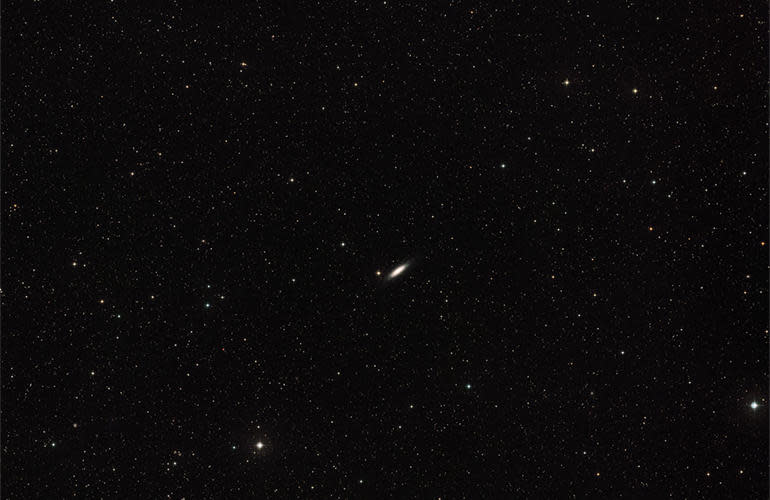Hubble watches the loneliest galaxy

Dwarf galaxy NGC 6503. NASA, ESA
 NGC 6503, all by its lonesome in the surrounding space. NASA, ESA, Digitized Sky Survey 2 (Acknowledgement: Davide De Martin)
NGC 6503, all by its lonesome in the surrounding space. NASA, ESA, Digitized Sky Survey 2 (Acknowledgement: Davide De Martin)
Dwarf galaxy NGC 6503. NASA, ESA
Not all space is created equal.
In fact, much like animals, galaxies and stars tend to cluster together, not by survival instinct, but by each other's gravity, creating clusters and rivers of celestial objects.
Related articles
The Milky Way galaxy, for instance, belongs to a cluster of galaxies we call the Local Group (which is at least accurate, if not particularly imaginative. A thing as grand as a cluster of galaxies should be named accordingly, like The Most Illustrious Sidereal Congregation, or similar).
The Local Group contains somewhere upwards of 54 galaxies, with a gravitational centre located somewhere between the Milky Way galaxy and the Andromeda galaxy. Around it are other clusters that make up the Virgo Supercluster of galaxies. Adjacent to the Local Group is a dark, empty patch of space at least some 150 million light-years across we refer to as the Local Void (or, if you were feeling imaginative, the Desolate Chasm of Colossal Despair).
It is on the edge of this void where dwarf spiral galaxy NGC 6503 can be found. It's a clusterless loner, just 30,000 light-years across, located 18 million light-years from Earth. It has been part of theLegacy Extragalactic UV Survey, conducted by the Space Telescope Science Institute using Hubble data on local galaxies.
Hubble surveys typically use only a few tens of orbits worth of data, but this particular survey ran over a span of 154 Hubble orbits. The team has collated some fascinating data on the lonely galaxy. Its central bulge is almost nonexistent, surrounded by a massive cloud of gas.
In spite of the large halo of gas, the gas hole at the heart of NGC 6503 is believed to be weak, receiving only small amounts of infalling gas -- black hole food.
The new images released this week by the Hubble team, taken using the Hubble's Wide Field Camera 3, shows the galaxy in a much higher level of detail than had been available previously. Bright red regions indicate patches of gas in the galaxy's spiral arms, while bright blue regions indicate hotbeds of new star formation. Dark brown regions indicate lanes of dust throughout the galaxy's arms.
Discovered in 1987, the Local Void is a result of the gravitational clustering of galaxies. As clusters pull together, they create voids -- low-density areas with few to no galaxies. Hubble data has determined that this gravitational pull, slow but inexorable, is widening the Local Void even farther: a 2007 study found that the edge of the Local Sheetof galaxies, which borders the Local Void, is travelling away from its centre at a rate of 230 kilometres per second.


No comments:
Post a Comment